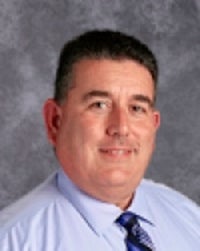Administrator’s Corner: Student perceptions, data realities
Published 6:09 pm Friday, February 7, 2020
Administrator’s Corner by John Double

John Double
February is Career and Technical Education Month, or CTE Month, and it is a great time for us to look at how our students’ perceptions about their future plans are becoming realities in their daily lives. To accomplish this comparison, we will look at the 2019 Minnesota Student Survey data and the Minnesota Statewide Longitudinal Education Data System data. Both of these sources have key pieces of information to bring forward to the discussion.
On the 2019 Minnesota Student Survey, when 11th grade students were asked about the main thing they planned to do right after high school, 81% of males and 90% of females reported they were looking at some sort of post-secondary education, while 18% of males and 6% of females reported they were looking to enter employment. The 2010-17 SLEDS data shows just over 65% of students enrolled in college while almost 28% entered employment right after high school. This discrepancy between students’ perceptions and the data realities is something we examine to better inform our students about their interests, the various career fields and their pathways to those careers.
Looking again at the 2019 Minnesota Student Survey Data and examining the data for those students looking at post-secondary education, 58% of males and 73% of females were specifically looking at a four-year college education. The 2010-15 SLEDS data shows that while about 56% of those who enrolled in college graduated with a certificate or degree, the 2010-12 SLEDS data shows that about 35% of students enrolled in college achieved a bachelor’s or four-year degree. This discrepancy between student perceptions and the data realities is something we utilize to better inform our students on the educational needs to enter specific career fields they are interested in pursuing.
While these are just a few data points of interest, they show us some great information to start conversations. Whether those conversations are between students and parents, students and school counselors, families and schools, faulty at our schools, secondary schools and post-secondary institutions, or the education community and the business community, the preparation of our students for their career decisions should be our focus. Together we inform and inspire our students as the upcoming workforce. How can each of us help them on their individual pathways to achieve success in their lives?
To see more information from these data sources, view the school board video from the Feb. 3 board study session at www.alschools.org/school-board/school-board-videos.
SLEDS data used in this column is the most current available for those respective statistics.
John Double is an administrator on special assignment with Albert Lea Area Schools.

